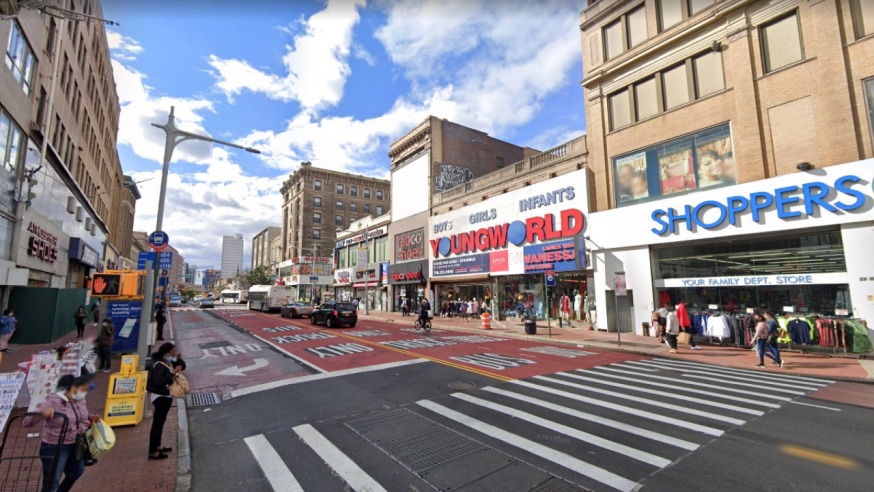
Two Queens elected officials have created a new council that aims to address quality of life issues in Downtown Jamaica and spur economic growth in the area. Pictured is Jamaica Avenue (Google Maps)
May 13, 2022 By Michael Dorgan
Two Queens elected officials have created a new group that aims to address quality of life issues in Downtown Jamaica and spur economic growth in the area.
The Downtown Jamaica Improvement Council, which launched Thursday, seeks to bring local stakeholders together to streamline the completion of public projects throughout the district.
The organization was launched to improve the overall state of Downtown Jamaica so it can thrive as a commercial, residential and transportation hub.
The council was established by Queens Borough President Donovan Richards and Councilmember Nantasha Williams, who represents Jamaica. Richards and Williams are co-chairing the council.
The council is comprised of several other elected officials including Rep. Gregory Meeks, State Sen. Leroy Comrie, Assembly Member Alicia Hyndman, City Council Speaker Adrienne Adams, and Council Members Selvena Brooks-Powers and James Gennaro.
Representatives from various city and state agencies also form part of the council including the NYPD, the MTA, the DOT as well as local civic groups, business groups and non-governmental organizations.
“Our Downtown Jamaica Improvement Council will work diligently to fast-track several projects that will improve conditions in Jamaica and make it an even better place to live, work and visit,” Richards said.
“The Council will not rest until Downtown Jamaica reaches its fullest potential.”
The council, Richards said, will address concerns voiced by residents as well as local civic and business leaders with regard to infrastructure, transportation, crime, homelessness and sanitation in Downtown Jamaica.
For instance, the council will work to make changes to the Jamaica Avenue busway as well as identify safety improvements, which could be made at the Jamaica Center and Sutphin Boulevard-Archer Avenue subway stations.
The council will also establish an Open Street on 165th Street and work towards beautifying the Jamaica bus terminal, Richards said.
He said that a grant program for small businesses will be created along with a business incubator.
Willams said that area is one of the most important economic hubs in southeast Queens and plays a vital role in the city’s economy.
“This is an opportunity to improve Downtown Jamaica by leveraging our collective resources… to make sure this vibrant part of our borough is even better than what it already is,” Williams said.
Officials from the governor and mayor’s office are also participating in the council, as are representatives from the Port Authority, Dept. of Sanitation, the New York City Economic Development Corporation, the New York City Department of Small Business Services, Queens Community Board 12, and the Empire State Development Corporation.
Non-governmental stakeholders include the Jamaica Center Business Improvement District (BID), the Sutphin Boulevard BID, the 165th Street Mall Association, the Queens Chamber of Commerce, the South East Queens Chamber of Commerce, the Greater Jamaica Development Corporation, York College and the Association for a Better New York.
Two months ago yesterday, we spent the day walking Jamaica Avenue to talk with small business owners, community leaders and residents about how we can best serve Downtown #Jamaica.
This week, we launched the Downtown Jamaica Improvement Council to address the concerns we heard. pic.twitter.com/jrQ2sjmIWu
— Queens Borough President Donovan Richards (@QnsBPRichards) May 12, 2022
